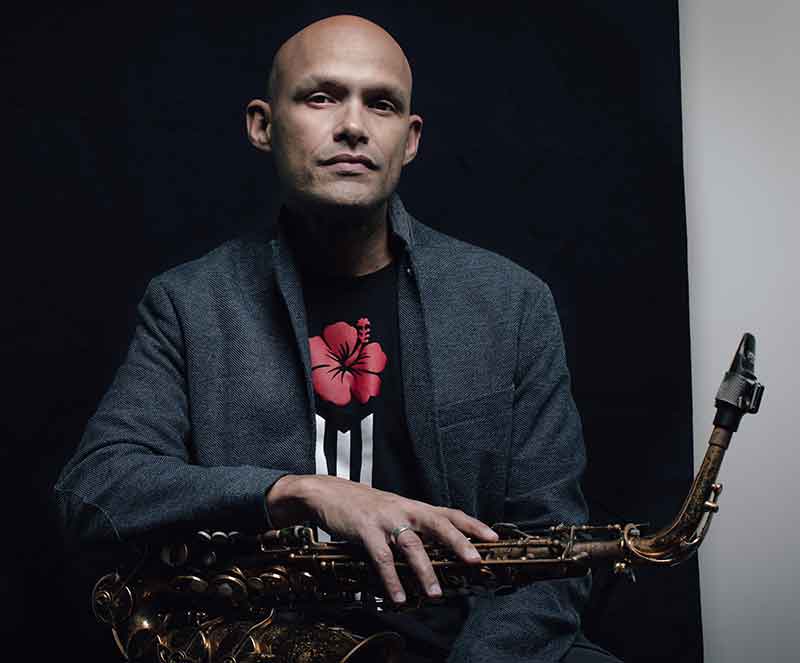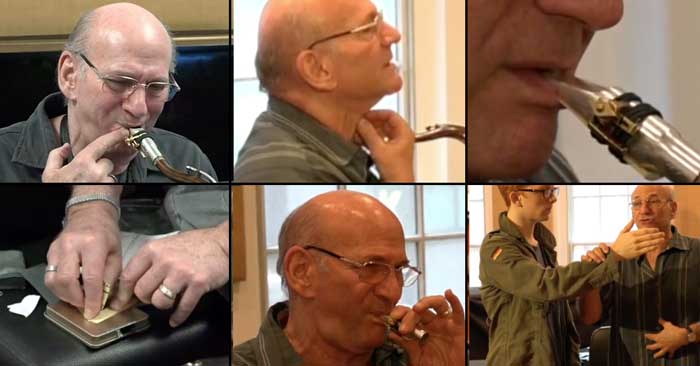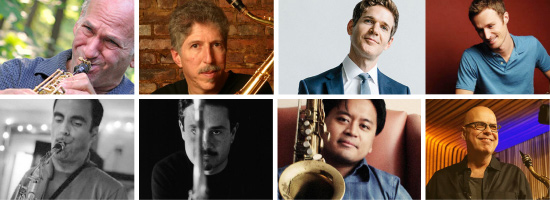Saxophonist Miguel Zenón on Redefining Modern Jazz and Honoring His Puerto Rican Roots

Miguel Zenón is not just a saxophonist—he’s a musical storyteller, a visionary artist who has spent his career blending the rich traditions of his Puerto Rican heritage with the spirit of jazz. A Grammy Award winner, Zenón has redefined modern jazz, infusing it with deep cultural narratives and technical mastery that have captivated audiences worldwide. Recipient of a MacArthur Fellowship at the age of 31, he’s also a Guggenheim Fellow and was named a 2024 Doris Duke Artist. His previous album, 2023’s ballad session with Venezuelan pianist Luis Perdomo, El Arte Del Bolero Vol. 2, won the 2024 Grammy for Best Latin Jazz Album.
Zenón’s latest album, Golden City was released in 2024 via Miel Music.
As an alto saxophonist, you have a unique voice within the jazz world. How have you developed and refined your sound over the years?
This took a lot of time and patience, and if I’m being completely honest, it’s still very much a work in progress. I feel like most of what I do is built on the shoulders of our musical ancestors and the masters of this music, although it’s important to me to present the listener with my own voice and perspective. I consider myself a jazz musician, but I’m also conscious of the fact that I’m a Latin-American musician from Puerto Rico, living in New York City, and I try to tap into all of these things when thinking of what my own sound should be.
Your music is known for blending Puerto Rican folklore with jazz. What inspired you to merge these two genres, and how do they complement each other in your compositions?
There was a time, especially during my early development as a jazz musician, where my only goal was to try to understand the jazz language so that I could use it as a platform for creativity and expression. I honestly was not interested in creating my own music or conceptualizing anything. But after living in the United States for a while, I quickly realized that there were a lot of things about Puerto Rican music and culture (and about Latin American music and culture in general) that I just didn’t know. So I felt a sense of responsibility to try to understand some of these things at a deeper level, and eventually started to write while trying to combine all of the things that interested me (jazz, Puerto Rican music, Western classical music, music from other parts of the world, etc.). The more I did it, the more natural it felt. So I’ve just been following the natural flow of this process, just to see where it goes.
You were a founding member of the SFJAZZ Collective and left in 2019 to pursue writing for your group and to spend more time with family. How has the SFJAZZ Collective shaped your development as an artist?
My time with the SFJAZZ Collective was deeply influential in my development as an artist. I wrote a lot of music for the band and got the chance to collaborate very closely with some of the best jazz musicians of our time. Folks like Bobby Hutcherson, Joshua Redman, Brian Blade, Joe Lovano, Nicholas Payton, and many others. San Francisco became a second home for me and my family during my time with the Collective. As a matter of fact, the music on my most recent album, Golden City (which was released in August 2024) was commissioned by SFJAZZ and premiered there in 2022. It’s a multi-movement extended composition inspired by the history of San Francisco, specifically from the perspective of its immigrant communities and minority groups.
Your album Sonero: The Music of Ismael Rivera is a tribute to Rivera, a Puerto Rican legend who revolutionized Latin-American music in the ’50s, ’60s, and ’70s. What drew you to Rivera’s music, and how did you approach reinterpreting his legacy through jazz?
It’s very hard to describe the impact and importance of the figure of Ismael Rivera in Puerto Rican culture. I grew up listening to his music through my parents and it always felt to me that he represented this quasi-mythical figure that transcended music in more ways than one. After I became a musician, I started listening to his music from a musician’s perspective, and his genius became even more evident. My approach was to try to identify some of the essential elements from his most well-known musical hits, and then re-imagine them from my own perspective. The album Sonero is the culmination of many years of fandom and admiration; our tribute to his legend and his legacy.
How has your cultural identity influenced your approach to music, particularly in your solo work?
I feel that it’s always there, sometimes in a very conscious and purposeful way, other times in a totally unconscious way. I don’t necessarily feel that it defines me as an artist, but I am very aware of its importance and the place it has within my creative persona.
How do you stay creatively inspired, and what drives you to keep evolving as a musician?
Listening to music is definitely my biggest source of inspiration. It could be listening to a classic jazz album for the one millionth time, trying to decipher something I haven’t noticed before, or listening to something totally new, fishing for ideas and inspiration. What I find most inspiring (and a little frustrating sometimes) is that there is ALWAYS something new to listen to; music is endless and infinite in that way.
How do you approach teaching, and what lessons do you find most important to impart to the next generation of musicians? Additionally, how has teaching influenced your own musicianship and creative process?
As a teacher, I feel that my job is to work with the students to help them identify their musical deficiencies and to provide them with tools that will assist them in achieving progress. All musicians have things that come more naturally, and other things that take a little more time to feel good and organic. While teaching, I make a point to emphasize the things the student is doing well at first, and then focus on the things that need to get better so that they can display a more balanced musicianship.
The process of internalizing musical information is a very lonely one; most musicians acquire lots of information over long periods of time, and then eventually work on their own to internalize this info until something clicks and you start seeing progress. So, the process of having to break down this learning process and explain it to someone else helps me connect with a lot of these concepts at a deeper level. From this perspective, I honestly feel that teaching has made me a better and more well-rounded musician. It’s also very fulfilling for me to stay connected to a younger generation, exchanging points of view and experiences. I find that there is always something new for me to learn as well.
How did winning a Grammy Award impact your career and home life?
It has been extremely positive in every way. The Grammy win opened a lot of doors for us professionally speaking and has provided platforms for our music to reach even more listeners. All recognitions feel like a reward for the work put in, and that was the case here as well. Having said that, I’m fully aware that no recognition will make me a better musician or person, and that there’s still a lot of work ahead.
What advice would you give to young musicians looking to find their unique voice and break through in the music industry?
Be committed to your craft, work hard, and keep an open mind.
What do you hope listeners take away from your music, particularly those unfamiliar with the cultural influences behind your compositions?
I’m hoping that my music is an honest and transparent portrayal of who I am as an individual, and that our listeners can hear that in one way or another.
BONUS Saxohpone Fun Facts from the Author…
– The Saxophone Wasn’t Originally Meant for Jazz! – The saxophone was invented by Adolphe Sax in the 1840s and was initially intended for classical and military band music. It wasn’t until the early 20th century that jazz musicians embraced it, making it a staple of the genre. If you’re a beginner sax player, you can purchase an Alto Saxophone HERE. For more advanced players, your new sax is waiting for you HERE.
– It’s Not Actually a Brass Instrument – Despite its shiny brass body, the alto saxophone is classified as a woodwind instrument because it uses a reed to produce sound, just like a clarinet.
– It’s the Second Smallest Saxophone in the Standard Family – The alto sax is smaller than the tenor and baritone saxophones but larger than the soprano sax. This size gives it a bright, expressive tone that’s perfect for both jazz and classical music.





